Abstract
Laboratory column studies were conducted at the Utah Water Research Laboratory, Logan, Utah, to evaluate reovirus removal from drinking water supplies by slow-rate sand filtration (SSF). Columns, constructed to simulate a full-scale SSF field operation, were inoculated with reovirus at ca. 1,000-times-greater concentrations than those typically found in domestic sewage. Reovirus removal and inactivation were investigated as functions of filter maturity and other filter sand characteristics. Reovirus removal studies demonstrated that the SSF process is capable of reducing reovirus in influent water by a minimum of 4 log concentration units under certain conditions of water quality, flow rate, and sand bed construction. Infectious reovirus was not detected in effluent samples from any of the sand beds studied, after inoculation of the SSF columns; therefore, removal efficiencies were not affected significantly by characteristics, including age, of the two filter sands evaluated. Studies conducted with radioactively labeled reovirus demonstrated that reovirus removed from influent water was distributed throughout the entire length of the filter beds. Concentrations of reovirus in the filter sands decreased with increasing bed depth. The greatest removal occurred in the top few centimeters of all sand beds. No infectious reovirus could be detected in clean or mature sand bed media, indicating that reoviruses were inactivated in the filter.
Full text
PDF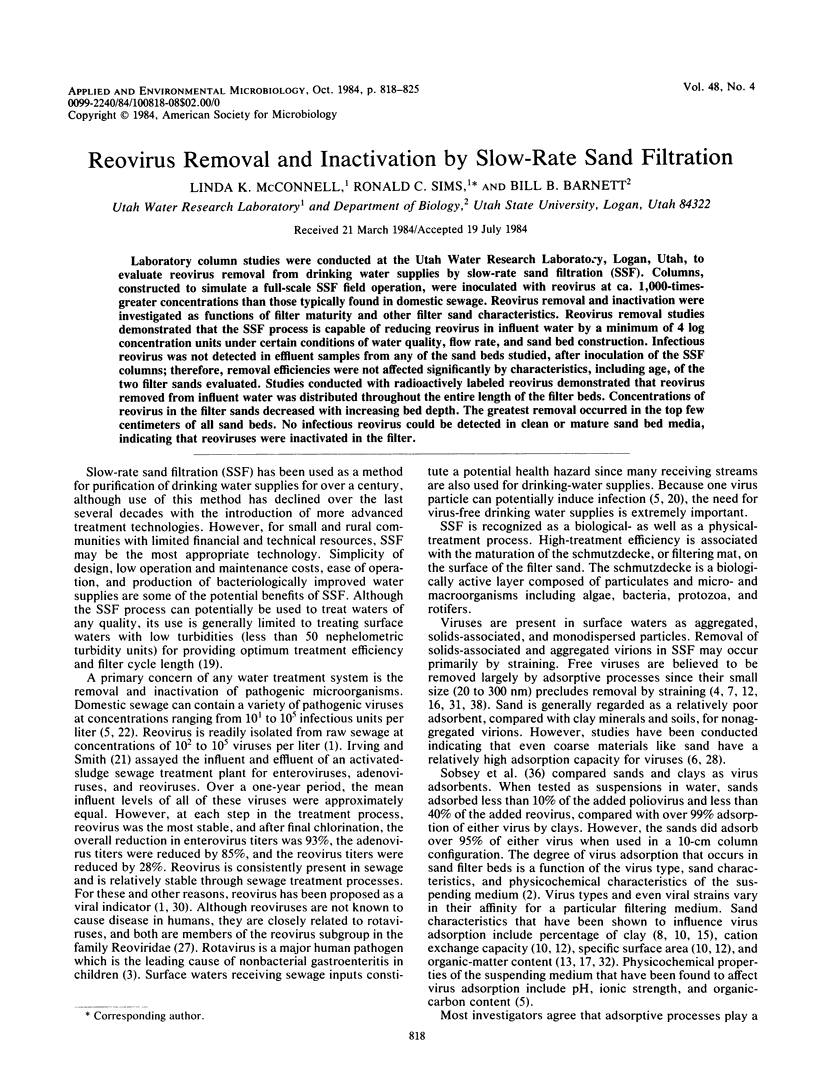
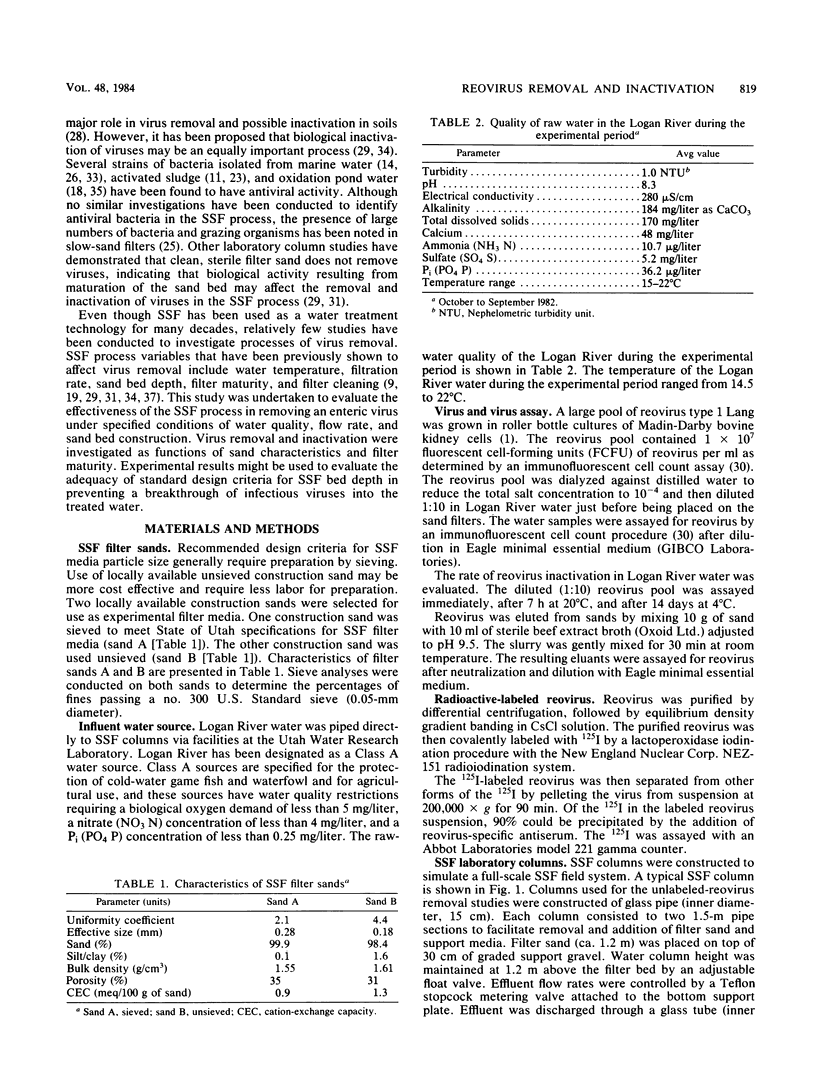
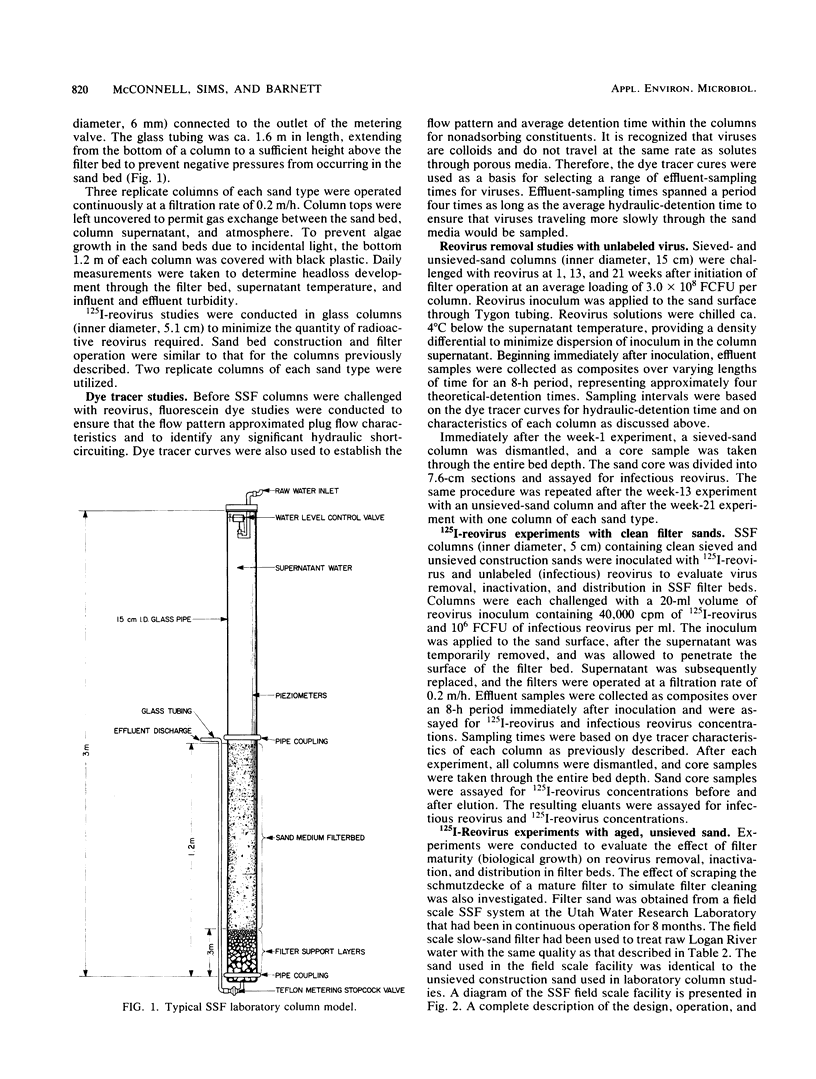
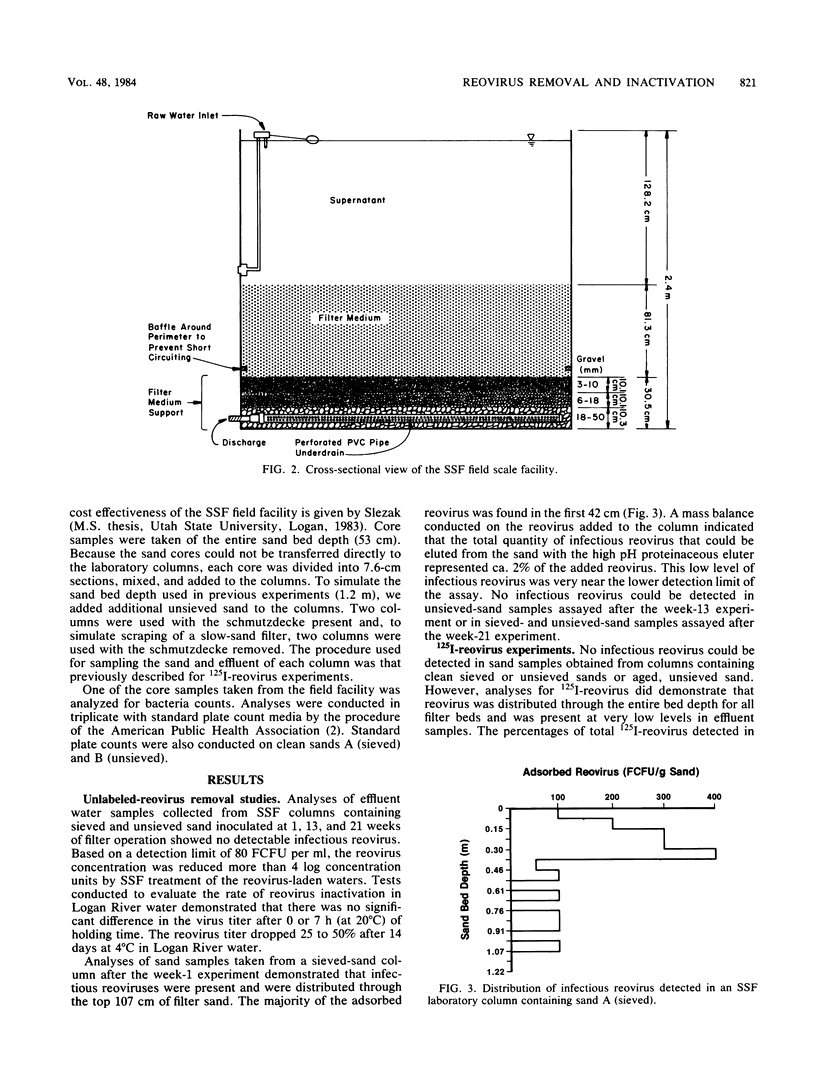
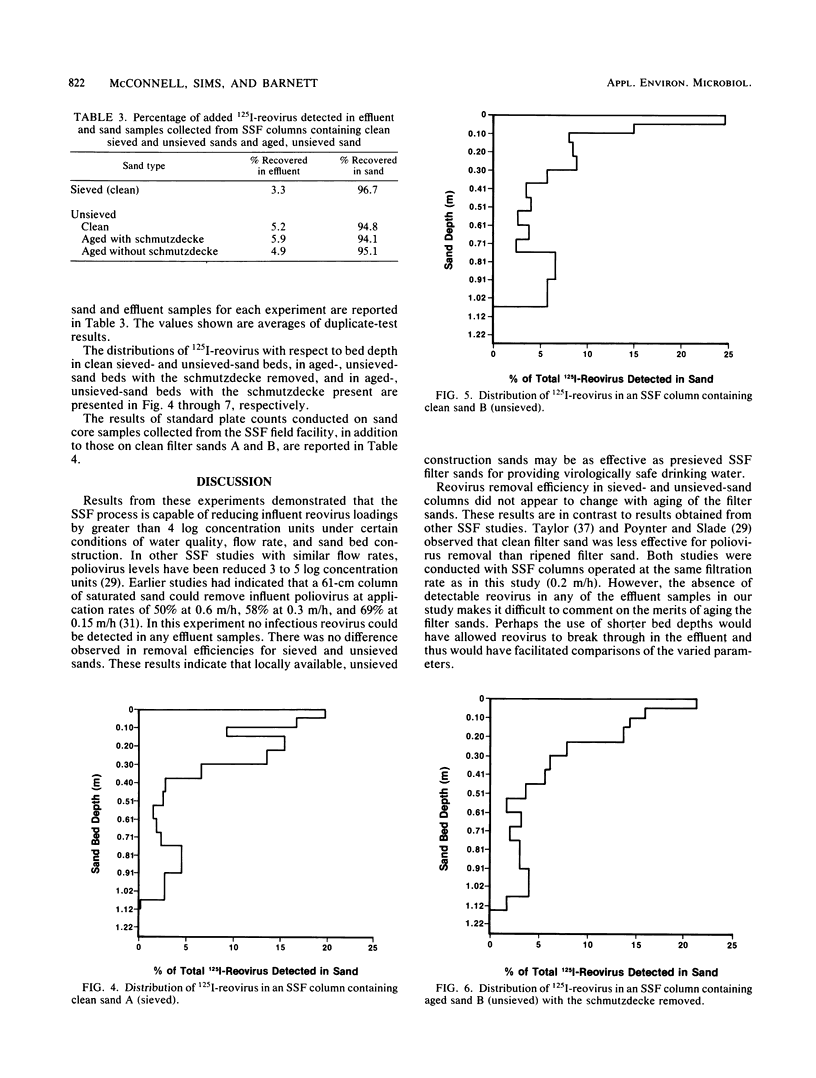
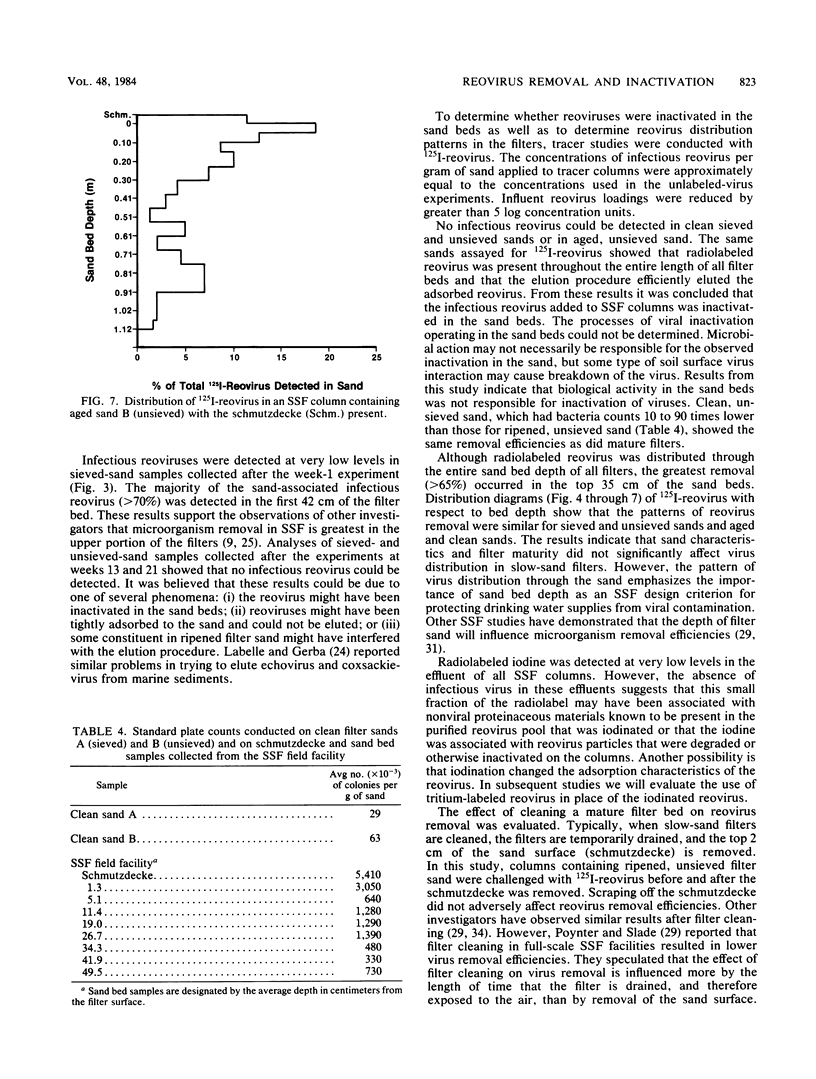
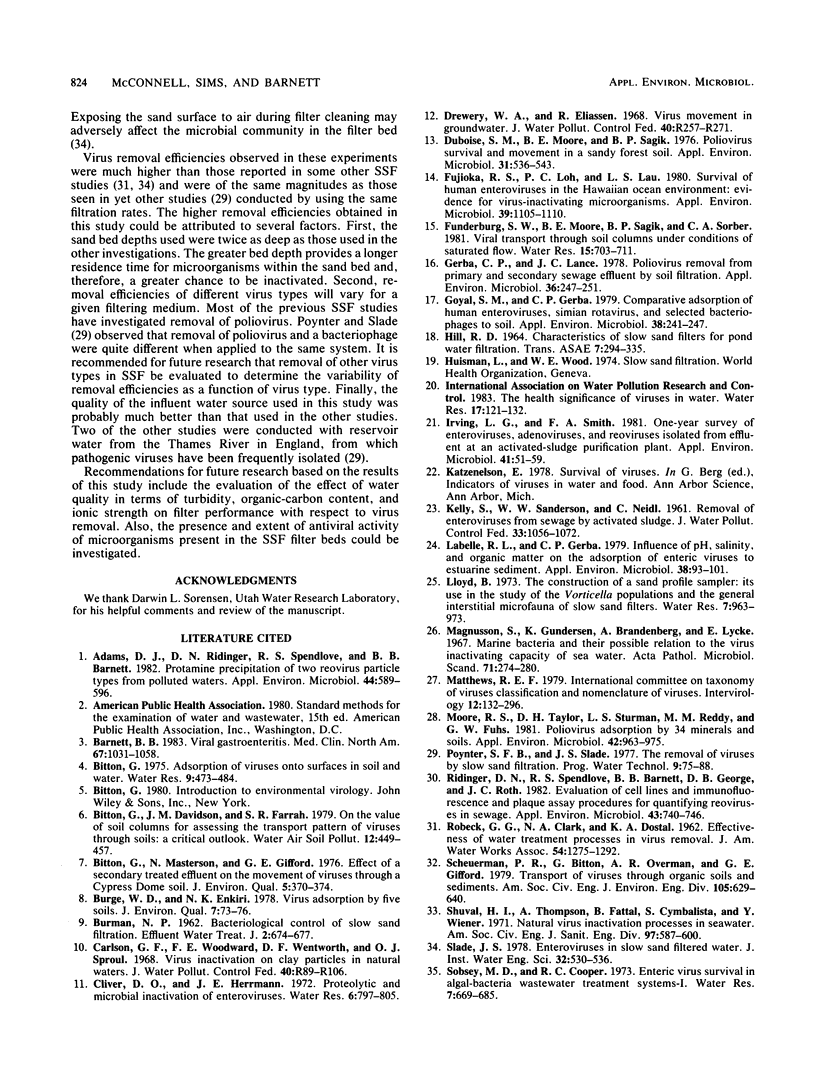
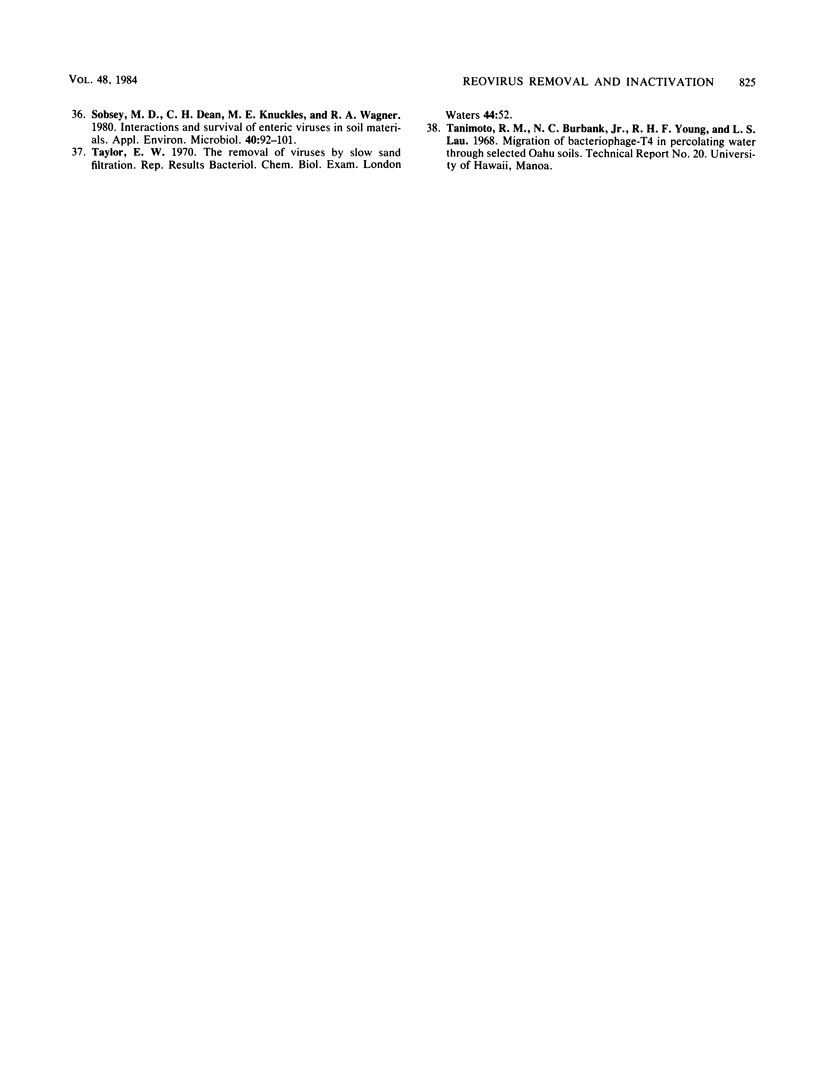
Selected References
These references are in PubMed. This may not be the complete list of references from this article.
- Adams D. J., Ridinger D. N., Spendlove R. S., Barnett B. B. Protamine precipitation of two reovirus particle types from polluted waters. Appl Environ Microbiol. 1982 Sep;44(3):589–596. doi: 10.1128/aem.44.3.589-596.1982. [DOI] [PMC free article] [PubMed] [Google Scholar]
- Barnett B. Viral gastroenteritis. Med Clin North Am. 1983 Sep;67(5):1031–1058. doi: 10.1016/S0025-7125(16)31165-8. [DOI] [PMC free article] [PubMed] [Google Scholar]
- Duboise S. M., Moore B. E., Sagik B. P. Poliovirus survival and movement in a sandy forest soil. Appl Environ Microbiol. 1976 Apr;31(4):536–543. doi: 10.1128/aem.31.4.536-543.1976. [DOI] [PMC free article] [PubMed] [Google Scholar]
- Fujioka R. S., Loh P. C., Lau L. S. Survival of human enteroviruses in the Hawaiian ocean environment: evidence for virus-inactivating microorganisms. Appl Environ Microbiol. 1980 Jun;39(6):1105–1110. doi: 10.1128/aem.39.6.1105-1110.1980. [DOI] [PMC free article] [PubMed] [Google Scholar]
- Gerba C. P., Lance J. C. Poliovirus removal from primary and secondary sewage effluent by soil filtration. Appl Environ Microbiol. 1978 Aug;36(2):247–251. doi: 10.1128/aem.36.2.247-251.1978. [DOI] [PMC free article] [PubMed] [Google Scholar]
- Goyal S. M., Gerba C. P. Comparative adsorption of human enteroviruses, simian rotavirus, and selected bacteriophages to soils. Appl Environ Microbiol. 1979 Aug;38(2):241–247. doi: 10.1128/aem.38.2.241-247.1979. [DOI] [PMC free article] [PubMed] [Google Scholar]
- Irving L. G., Smith F. A. One-year survey of enteroviruses, adenoviruses, and reoviruses isolated from effluent at an activated-sludge purification plant. Appl Environ Microbiol. 1981 Jan;41(1):51–59. doi: 10.1128/aem.41.1.51-59.1981. [DOI] [PMC free article] [PubMed] [Google Scholar]
- LaBelle R. L., Gerba C. P. Influence of pH, salinity, and organic matter on the adsorption of enteric viruses to estuarine sediment. Appl Environ Microbiol. 1979 Jul;38(1):93–101. doi: 10.1128/aem.38.1.93-101.1979. [DOI] [PMC free article] [PubMed] [Google Scholar]
- Magnusson S., Gundersen K., Brandberg A., Lycke E. Marine bacteria and their possible relation to the virus inactivation capacity of sea water. Acta Pathol Microbiol Scand. 1967;71(2):274–280. doi: 10.1111/j.1699-0463.1967.tb05164.x. [DOI] [PubMed] [Google Scholar]
- Matthews R. E. Third report of the International Committee on Taxonomy of Viruses. Classification and nomenclature of viruses. Intervirology. 1979;12(3-5):129–296. doi: 10.1159/000149081. [DOI] [PubMed] [Google Scholar]
- Moore R. S., Taylor D. H., Sturman L. S., Reddy M. M., Fuhs G. W. Poliovirus adsorption by 34 minerals and soils. Appl Environ Microbiol. 1981 Dec;42(6):963–975. doi: 10.1128/aem.42.6.963-975.1981. [DOI] [PMC free article] [PubMed] [Google Scholar]
- Ridinger D. N., Spendlove R. S., Barnett B. B., George D. B., Roth J. C. Evaluation of cell lines and immunofluorescence and plaque assay procedures for quantifying reoviruses in sewage. Appl Environ Microbiol. 1982 Apr;43(4):740–746. doi: 10.1128/aem.43.4.740-746.1982. [DOI] [PMC free article] [PubMed] [Google Scholar]
- Sobsey M. D., Dean C. H., Knuckles M. E., Wagner R. A. Interactions and survival of enteric viruses in soil materials. Appl Environ Microbiol. 1980 Jul;40(1):92–101. doi: 10.1128/aem.40.1.92-101.1980. [DOI] [PMC free article] [PubMed] [Google Scholar]


